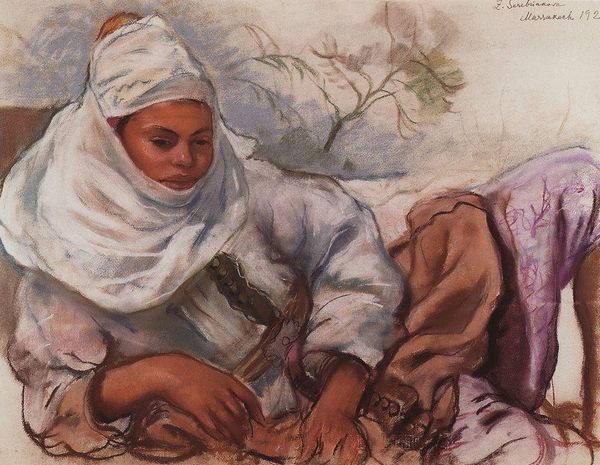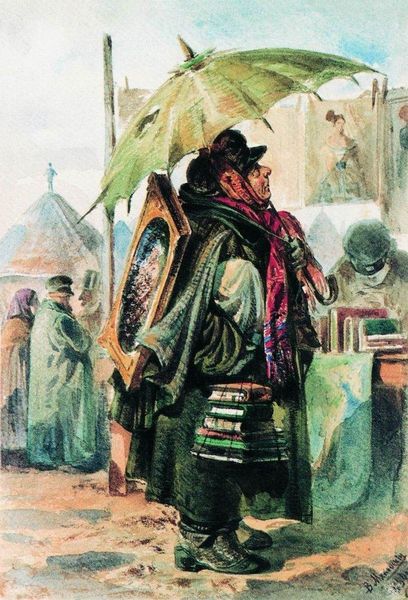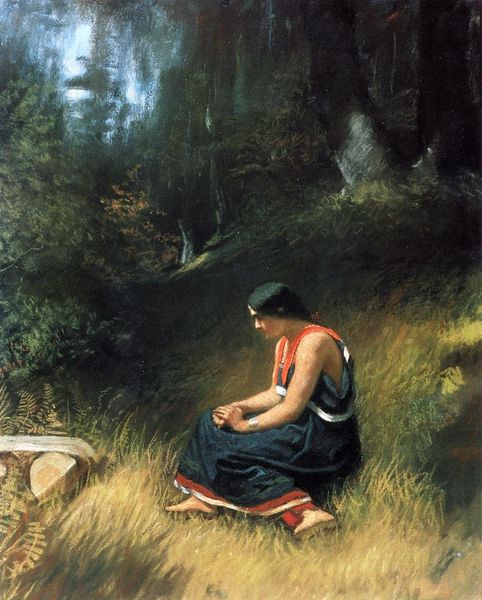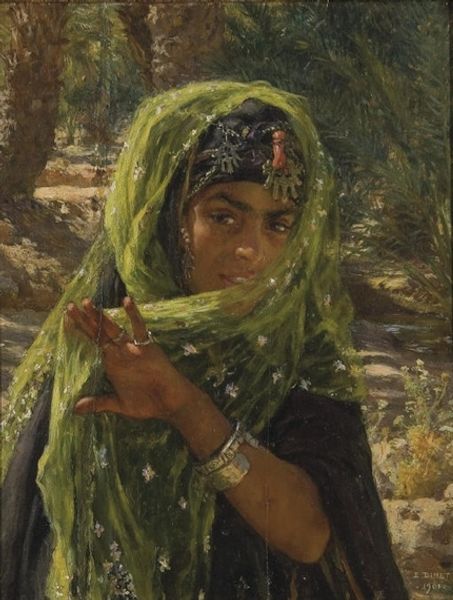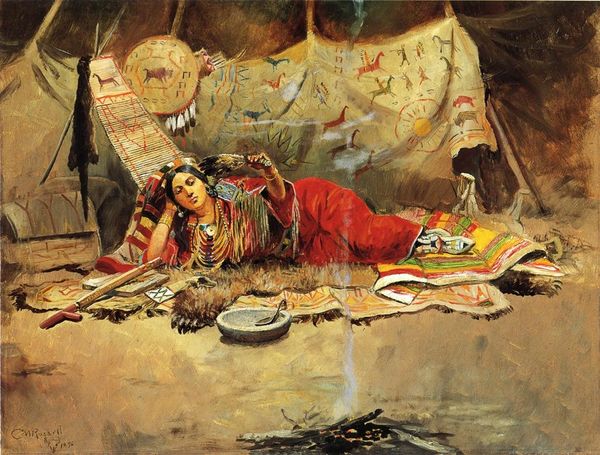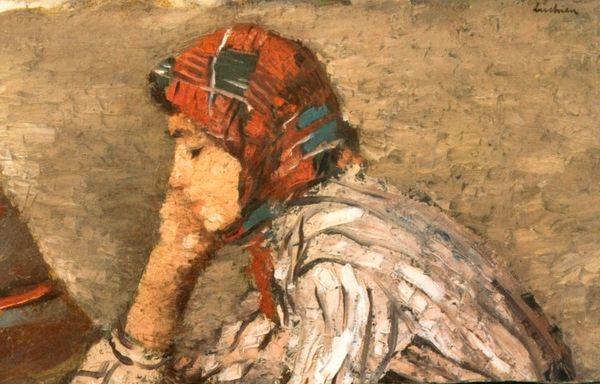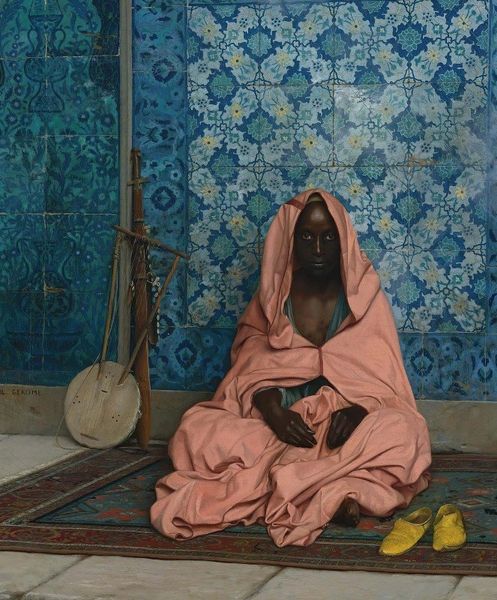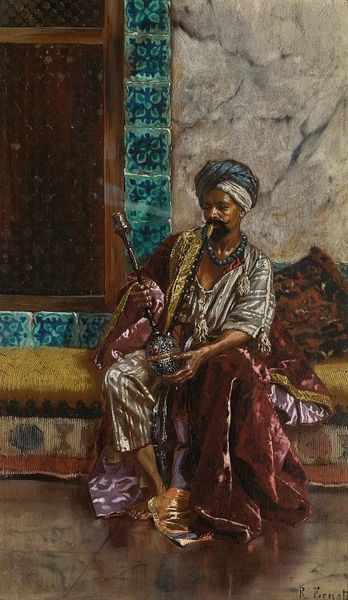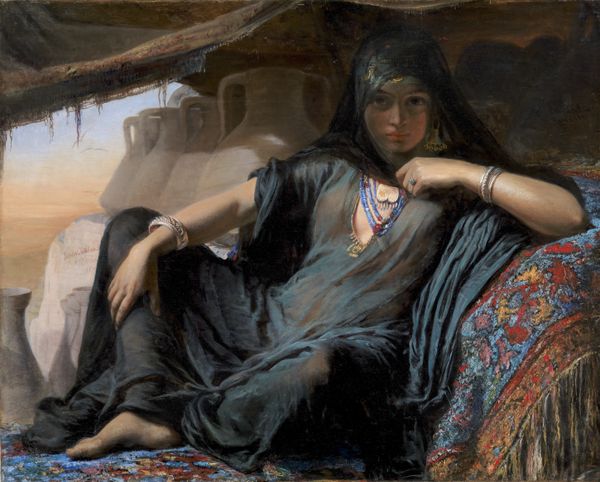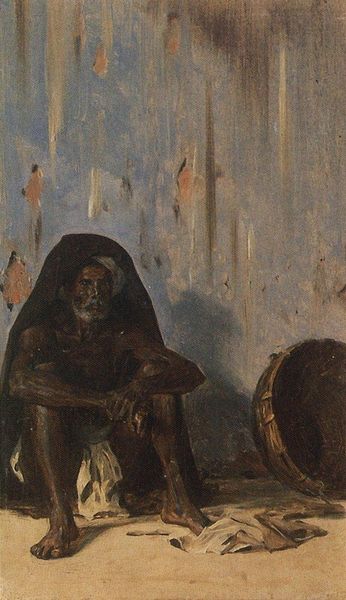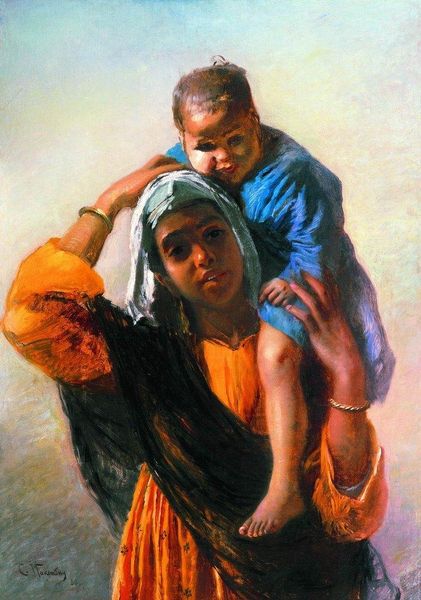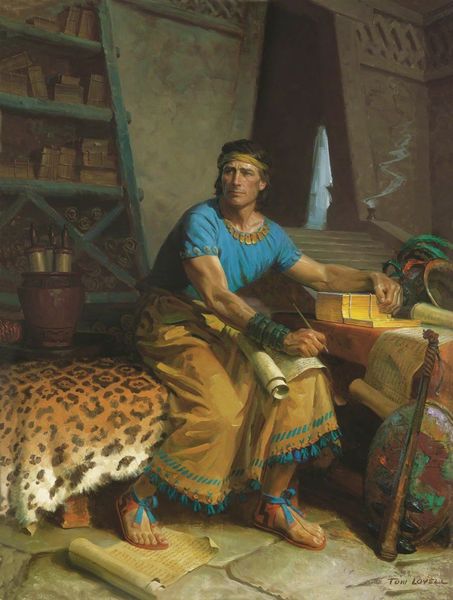
Copyright: Public domain
Curator: Looking at this painting, I feel immediately drawn into the intimacy of the scene. The muted greens and browns create a tranquil backdrop for the figures. Editor: This is Konstantin Makovsky’s, "Egyptian with a Child," painted in 1876. The artwork offers an example of the period's fascination with genre scenes, particularly those exoticizing non-European cultures. We need to consider this Orientalist lens through which the image is presented and how that impacts representation. Curator: Absolutely. It's crucial to acknowledge the power dynamics at play. The way Makovsky frames this woman and child does invite questions. What does this depiction say about 19th-century European perceptions of Egypt and motherhood? There’s a risk of romanticizing what, in reality, could have been a situation marked by struggle. Editor: Precisely. Art institutions then displayed these genre paintings in salons for an audience hungry for glimpses of “elsewhere.” Note how the artistic style, leaning towards Realism with its detailed rendering, paradoxically reinforces a sense of authenticity that might not hold true when considering its context. The woman is unnamed, decontextualized, serving, it seems, as an aesthetic object rather than a subject with agency. Curator: Considering feminist theory and the politics of representation, one could say this work reproduces rather than subverts existing cultural tropes about motherhood in foreign lands. Are we invited to empathize with her, or merely to observe her as "other"? The shadows partially obscuring her face might further deny her individuality. Editor: That's a very salient point about visibility and anonymity. And think about the politics inherent to image-making at the time—the artist had the authority, which is still felt even today as it shapes our gaze, often without our full awareness. By analyzing these power structures within visual culture, we uncover layers of social commentary, intended or not. Curator: Ultimately, engaging with artwork such as "Egyptian with a Child" is valuable when we simultaneously celebrate the artist's technical skill and maintain critical awareness of its historical and cultural implications. Editor: It pushes us to reflect on the function of art as a reflection of – and an influence on – the societal narratives of their day and today.
Comments
No comments
Be the first to comment and join the conversation on the ultimate creative platform.
